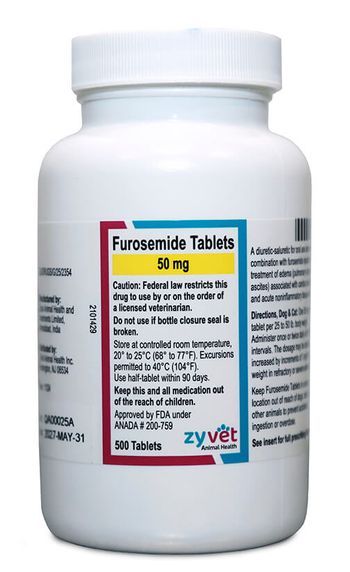
Congenital heart disease (Proceedings)
The primary objectives of the cardiovascular evaluation for animals with congenital heart disease are to define the nature and severity of the anatomic defect present. Familiarity with the available therapeutic options, their efficacy and limitations is necessary before an accurate prognosis can be offered to the owner.
The primary objectives of the cardiovascular evaluation for animals with congenital heart disease are to define the nature and severity of the anatomic defect present. Familiarity with the available therapeutic options, their efficacy and limitations is necessary before an accurate prognosis can be offered to the owner.
Acyanotic congenital heart defects: left to right shunts
The normal circulation is anatomically and functionally separated into two sides. The right side (systemic veins, right atrium, right ventricle and pulmonary arteries) is a low-pressure circuit while the left side (pulmonary veins, left atrium, left ventricle, and systemic arteries) is a high-pressure circuit. The direction and magnitude of blood flow across any abnormal communication is dependent on: 1) The size of the communication and 2) the relative pressure difference between the communication.
Patent ductus arteriosus (PDA) including right to left shunting lesions
In the fetus the ductus arteriosus serves to shunt the majority of the right ventricular output away from the non-functioning lungs. Expansion of the lungs, increased oxygen concentrations and removal of the umbilical circulation at the time of birth promotes ductal closure along with a marked decline in the pulmonary vascular resistance. Failure of ductal closure usually results in a left to right shunt from the descending aorta to the pulmonary artery with an excess volume load placed on the pulmonary arteries and veins, left atrium, left ventricle and aortic arch. The size of the shunt depends on the internal diameter and length of the ductus arteriosus. The ductus is usually funnel-shaped with the aortic end wider than the pulmonary arterial end. Histology of the patent ductus reveals a wall structure resembling that of the aorta rather than that of a normal ductus. In the presence of a very large, wide PDA the magnitude and direction of shunted blood is determined by the relative resistance of the pulmonary and systemic circulations. In these dogs the elevated pulmonary vascular resistance present at birth does not fall normally and results in right to left shunting or bidirectional shunting. On rare occasion pulmonary hypertension develops later in life thereby truly reversing the direction of the shunt (Eisenmenger's physiology).
Clinical features
• Historically the most common congenital heart defect in dogs although the recent popularity of large breed dogs has resulted in increased prevalence of SAS. PDA is much less common in cats.
• Females are over-represented.
• Physical examination findings include:
· A continuous "machinery" murmur that is heard best at the left heart base. The continuous murmur may be confined to the heart base while a systolic murmur of mitral insufficiency is ausculted over the left apical region.
· Bounding (or waterhammer) pulses are frequently identified because of the increased systolic and decreased diastolic aortic pressures (widened pulse pressure).
· Common clinical signs include stunted growth or evidence of left sided heart failure (dyspnea, tachypnea, coughing, exercise intolerance.)
· PDA with pulmonary hypertension has no murmur but may have a split S2, differential cyanosis, and hindleg weakness. These dogs often display "differential cyanosis" where the hindlimbs are affected while the forelimbs are normal. This develops because of the communication of the pulmonary artery with the descending aorta.
• Electrocardiographic findings
· Variable but often marked left ventricular enlargement pattern, possible left atrial enlargement and secondary ST segment changes associated with hypoxia.
· Advanced cases may show supraventricular tachyarrhythmias (APCs, A fib) or less frequently ventricular arrhythmias.
· A right ventricular enlargement pattern is almost always evident in cases of right to left shunting with pulmonary hypertension.
• Thoracic radiography
· Enlargement of the left atrium, left ventricle, aortic arch, main pulmonary artery along with pulmonary vascular overcirculation (enlargement of both pulmonary arteries and veins).
· Evidence of left sided heart failure may be present.
· Dogs with right to left shunting often display pulmonary vascular undercirculation (hypovascularity of pulmonary arteries and veins), a prominent right heart pattern, dilation of the main pulmonary artery and localized dilation of the proximal aorta.
• Echocardiography: Serves to evaluate the severity of volume overload as reflected by changes in the left heart chamber dimensions, detect other coexisting congenital heart defects, and assess myocardial function.
• Prognosis
· In dogs with left to right shunts the prognosis is excellent with surgical or transcatheter closure of the defect prior to the development of left-sided heart failure. Without correction puppies with large shunts may die before four weeks of age, dogs with intermediate sized shunts may live for several years although the majority will be dead by 2 years of age. Dogs with small shunts (uncommon) may live normal lives.
· In dogs with right to left shunts the prognosis is guarded. Some dogs may survive for long periods of time with exercise restriction and periodic phlebotomy or agents utilized to decrease red blood cell production.
• Treatment: Ideally involves surgical correction of left to right shunts via thoracotomy or less invasive embolization procedures prior to the development of clinical signs. In cases of left to right shunts with congestive heart failure stabilization is achieved with standard medical therapy followed by closure. Surgery is contraindicated in dogs with right to left PDAs and instead efforts are aimed at preventing hyperviscosity via periodic phlebotomy.
Ventricular septal defect (VSD)
Ventricular septal defects typically occur in the membranous portion of the interventricular septum just below the aortic valve on the left and just under the anterior part of the septal leaflet of the tricuspid valve on the right. The defect is usually ringed by fibromembranous tissue. Depending on the size of the defect the ventricles may be normal or display eccentric hypertrophy. Aortic insufficiency may occur when the defect undermines the right or noncoronary cusp of the aortic valve and the leaflet "falls" into the VSD. VSDs are often part of more complicated defects involving the conotruncal septum (Tetralogy of Fallot) or the endocardial cushions (common atrioventricular canals). Again the size of the shunt depends on the size of the defect and the relative resistances in the pulmonary and systemic circuits (which subsequently determine the right and left ventricular pressures).
Clinical features
• One of the most common congenital defects identified in cats.
• Physical examination findings include:
· A mixed frequency holosystolic, regurgitant murmur that is usually loudest on the right second to third intercostal space. The location is variable and the murmur may be heard on the left. The murmur may display a crescendo-decrescendo quality.
· Arterial pulses are usually normal although they may be abbreviated with large defects.
· Most patients are asymptomatic but left-sided congestive signs may be present with moderate sized defects while both left and right-sided congestive signs may be seen with very large defects.
• Electrocardiographic findings: Often normal although it may display left atrial and left ventricular enlargement patterns. VSDs may be accompanied by AV nodal conduction abnormalities as the His-Purkinje system is interrupted.
• Thoracic radiography: Often normal with small defects while larger defects may be accompanied by left atrial and left ventricular enlargement, pulmonary vascular overcirculation and evidence of left sided congestive heart failure.
• Echocardiography: Serves to visualize the defect and evaluate the hemodynamic consequence of the VSD based on left atrial and left ventricular dimensions.
• Prognosis: The prognosis is excellent with small defects although larger defects (or those that induce substantial aortic insufficiency) have a guarded prognosis.
• Therapy: Small defects do not require any therapy while larger defects may require:
· Medical management to combat congestive heart failure.
· Surgical palliation by banding of the pulmonary artery (serves to increase right ventricular pressures and thereby decrease the magnitude of the left to right shunt).
· Definitive surgical correction with cardiac bypass.
Acyanotic congenital heart defects: obstructive malformations
Obstructive lesions produce their effects by impeding normal blood flow and causing an increased pressure proximal to the obstruction. The two clinical syndromes identified in small animals include pulmonic stenosis and aortic stenosis. Four anatomic types of obstruction can occur at each location and include: supravalvular, subvalvular, valvular and infundibular. All result in similar degrees of functional impairment but their distinction is important if surgical correction is contemplated.
Pulmonic stenosis
Pathology of the pulmonic valves typically includes variable thickening of cusps and fusion of the cusps at their commissures. Pulmonic stenosis may occur as an isolated lesion or may be combined with other complex defects of the conotruncal septum (Tetralogy of Fallot). The resistance to ejection of blood from the right ventricle induced by the stenotic valve produces elevated RV systolic pressures, right ventricular concentric hypertrophy and in some cases increased right atrial pressure. A post-stenotic dilatation is usually present in the main pulmonary artery.
Clinical features
• The second or third (because of the increased prevalence of SAS) most commonly diagnosed congenital heart defect in dogs. Uncommon in cats.
• Physical examination findings include:
· Systolic, ejection (crescendo-decrescendo) murmur heard best over the left heart base. A split second heart sound may be obscured by the murmur.
· Arterial pulses are usually normal unless severe heart failure is present.
· Dogs may be asymptomatic, exhibit exercise intolerance, or in severe cases may exhibit dyspnea and cyanosis from low cardiac output. Syncopal episodes with exercise are occasionally reported. Signs of right sided heart failure may be present in severe cases.
• Electrocardiographic findings:
· A right ventricular enlargement pattern is usually evident while the rhythm is usually normal. In severe cases complicated by tricuspid dysplasia/insufficiency supraventricular tachyarrhythmias may be identified.
• Thoracic radiography: Characteristic findings include right ventricular enlargement and dilation of the main pulmonary arterial segment. The pulmonary vasculature is usually normal although in severe cases the lungs may appear undercirculated.
• Echocardiography: Serves to evaluate the extent of hypertrophy of the papillary muscles, septum and ventricular free wall of the right ventricle. The site of obstruction (valvular, subvalvular, etc.) may be identified via two-dimensional echocardiography and Doppler studies can evaluate the integrity of the tricuspid valve. Spectral Doppler can measure the peak blood flow velocity through the stenotic area and the modified Bernoulli equation (4V2 ) can estimate the pressure gradient and hence the severity of the stenosis.
• Prognosis: Many dogs with mild disease appear to do well without therapy while most agree that dogs with a pressure gradient over 80 - 100 mm Hg have a more guarded prognosis without therapy. Dogs with gradients between 40 and 80 mm Hg are more difficult to characterize.
• Therapy: Balloon valvuloplasty is effective at reducing the pressure gradient significantly in approximately 70% - 85% of cases. Otherwise, surgical methods including valvotomy or patch grafting of the outflow region can be considered. In the presence of congestive heart failure exercise restriction and medical therapy are employed followed by consideration for surgery.
Subvalvular aortic stenosis (SAS)
SAS may be the most commonly identified congenital lesion in some regions because of the vast popularity of Golden Retrievers. In dogs a subvalvular fibrous ring or band partially or completely encircles the left ventricular outflow tract. Small nodules may also occur on the aortic valve cusps. Valvular obstruction results in elevated left ventricular systolic pressures, concentric hypertrophy of the left ventricle and post-stenotic dilatation of the ascending aorta. Increased oxygen requirements of the concentrically hypertrophied left ventricle and disturbances in coronary blood flow may lead to myocardial ischemia. Histologically, arteriosclerosis of the small coronary arteries, fibrosis, necrosis, and calcification of the myocardium may be observed. SAS usually occurs as an isolated lesion although mitral valve dysplasia has been reported to occur concurrently. SAS is occasionally seen with pulmonic stenosis or a PDA.
Clinical features
• A common defect in dogs although it is infrequently recognized in other species.
• Physical examination findings:
· A systolic ejection murmur (crescendo-decrescendo) at the left heart base. It frequently radiates to the carotid arteries at the thoracic inlet and may radiate to the right hemithorax.
· Pulses may be weak and late rising due to retarded ventricular ejection.
· Young dogs are frequently asymptomatic but may have history of fatigue, dyspnea, or syncope. Sudden death (presumably from ventricular arrhythmias) is one of the most commonly reported events in young dogs with severe SAS.
• Arrhythmias (usually ventricular) may be present.
• Electrocardiographic findings: The ECG may be normal in mild cases or it may display a left ventricular enlargement pattern in more severe cases. ST segment depression may be present due to myocardial hypoxia and arrhythmias (usually ventricular) are common.
• Thoracic radiography: frequently unremarkable because the left ventricle hypertrophies concentrically. Findings may include left ventricular enlargement, post-stenotic dilatation of the aorta with variable left atrial enlargement. The pulmonary vasculature is normal unless left sided heart failure has developed.
• Echocardiography: Serves to evaluate the severity of the left ventricular hypertrophy, the area of the obstruction may be directly visualized by two-dimensional echocardiography, and Doppler evaluation can categorize the severity of the stenosis via the modified Bernoulli equation. Myocardial fibrosis, presumably due to ischemia, may be identified as hyperechoic areas within the myocardium. Echocardiography also helps to evaluate for the presence of combined congenital defects. Differentiating normal dogs from dogs with very mild SAS can be difficult even with echocardiography because the subvalvular lesion may be so discrete.
• Prognosis: The prognosis is guarded in cases of severe SAS (pressure gradient over 80 mm Hg). Owners should be made aware of the possibility of sudden death. SAS appears to be the one cardiac malformation that predisposes dogs to the development of bacterial endocarditis and standard antibiotic administration should be instituted whenever dogs with SAS undergo elective surgical procedures. Congestive heart failure may occur when mitral dysplasia is concurrently present or if myocardial failure develops after long-standing SAS.
• Treatment: To date surgical resection of the stenotic lesion has not decreased the incidence of sudden death. Balloon valvuloplasty has also proved unrewarding in most cases as the obstruction tends to recur shortly after the valvuloplasty. The structure of the fibrous ring also makes ballooning more difficult than that present with valvular pulmonic stenosis. Current medical management includes administration of beta-blocking drugs to decrease the heart rate and cardiac contractility thereby decreasing myocardial oxygen demands and hopefully the risk of sudden death. The effectiveness of this therapy is unknown. Arrhythmias should be appropriately treated if present.
Newsletter
From exam room tips to practice management insights, get trusted veterinary news delivered straight to your inbox—subscribe to dvm360.






